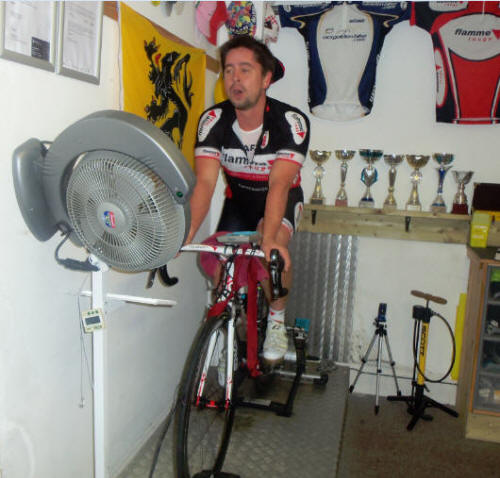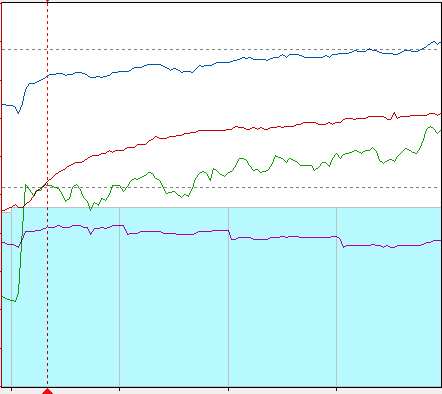FAQ ~ FTP Test - Road or Turbo

Simon Boyle ~ waiting to come
"back in the room"
Testing is always an "event"
When testing, I seem to get higher numbers on the
road than the rack. Should I be concerned that they are
different, and do I need to do two tests, or use a figure in
between?
Jay Chisnall ~ UK
The above is a conglomeration of a question asked by Jay and that of an American rider who had higher numbers on the turbo!
Turbo and road figures very rarely match up, because you are not really measuring the same thing. It's efforts and watts, but not as we know it. Although scientifically a watt is a watt, the dynamics for producing them are very different.
On the road you have headwinds, tail winds and (for completion) cross winds! You get elevation changes, which, depending on their direction, can have a dramatic effect on results.
Although tests should be carried out on a flat a road as possible, we all know a 20 minute, perfectly level road, doesn't exist. On the road you get micro-rests on the descents, corners, riding over manholes etc. The same goes for tailwinds.
For the false flats, even a change of just a metre or two, you have to push harder and use your muscular tension to get over it. This can increase output by up to 50 watts or more for a few seconds or so. The same goes for headwinds.
On a turbo, generally, the ride is consistent from start to finish. The slope, gradient, resistance (call it what you will) remains stable throughout. Seen here in blue...

You can ride this today and come back in three months time to do it again, knowing that everything will be exactly the same as previous. No wind direction, no elevation changes, no discrepancies, other than maybe temperature. You can compare, as much as possible, like for like.
Also on a turbo, there is almost no freewheeling. The pressure on the pedals is unrelenting and is maintained for the entire duration of the test, no matter what.
Unless you're climbing Ventoux or the Galibier, on the road there is always some point where you can ease off for a second. Not on a turbo.
Another factor to consider, is the psychological element.
On the road, you pedal as hard as you can, for as long as you can. But you have to watch out constantly for other road users and environmental issues. You think about what might be around that corner, or over that hill, and pay attention on everything in your immediate vicinity. In other words, you are constantly distracted.
You do not have this "luxury" on a turbo.
On a turbo, there is nothing, just the unadulterated sufferage of the blood, sweat and gears. Some people use music, others use video, but the main thing that always holds your attention is the incessant pain and burning of your legs. Isn't it just brilliant?
Some riders can lock in to this suffering and internalise it to help them drive forward. The distractions of the road mean they can't focus on the job in hand.
It depends on your mix of implicit/explicit motivational factors; which can flip-flop in the blink of an eye depending on the displayed power number of your read out. Which is why I always advocate covering it up!
As always, there isn't a definitive answer and we end with "it depends". The main thing is, to keep all variables to a minimum and ensure your back to back tests are as comparable as possible, because accuracy is important. So make sure you use the same power measuring device for all your tests and it's regularly calibrated.
Here's why this is an important question for Jay...

Jay Chisnall Rad am
Ring 24 hour MTB Champ
~ first non-German winner & legend...








